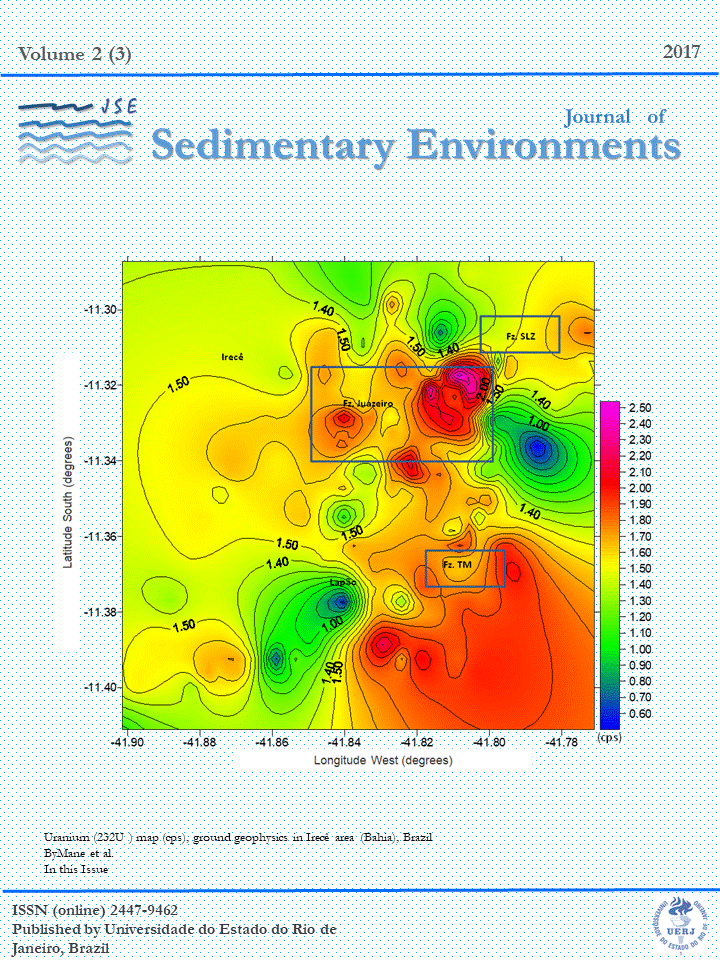STRATIGRAPHIC CORRELATION OF THE LATE SILURIAN-DEVONIAN OF THE AMAZON BASIN (BRAZIL) BASED ON GENETIC STRATIGRAPHIC SEQUENCE APPROACH
DOI:
https://doi.org/10.12957/jse.2017.31127Palavras-chave:
Amazon Basin. Genetic Stratigraphic Sequence. Silurian. Devonian. Well correlations.Resumo
The current study consists in the stratigraphic analysis of Late Silurian-Devonian interval in the Amazon Basin (Brazil) using the concepts of the Modern Stratigraphy, more specifically the genetic stratigraphic sequence, proposed by Galloway. that uses the marine flooding surface as a boundary of sequence. This methodology is since the sediments of studied interval are related to marine transgressions which were part of the basin paleogeographic context. Thus, the maximum flood surfaces, which are presented in four sections (AA ', B-B', CC 'and D-D') throughout the basin, represent chronostratigraphic events, which stand out in gamma ray profiles and are used as correlation data in thirteen exploration wells. Analysis of these sections allowed the identification of four fourth-order sequences (AB, BC, CD and DE) bounded by maximum flooding surfaces on the top and the base. Each sequence consists of asymmetric regressive-transgressive cycles, represented by highstand systems tract and transgressive systems tract. The analysis of these sections integrated with the stratigraphic maps (isopach and isolith) allowed the identification of the depocenter and two main source areas of sandy sediments (west and south). Besides, it was possible to infer that the marine transgression during the Paleozoic induced the deposition of pelitic sediments and followed a trend from northeast to southwest.
Downloads
Publicado
Edição
Seção
Licença

Journal of Sedimentary Environments (JSE) is licensed under a Creative Commons Attribution-Noncommercial-Share Alike 4.0 International License.

